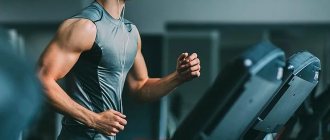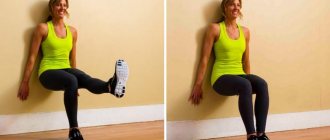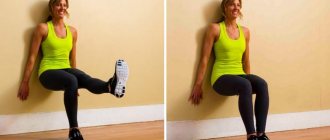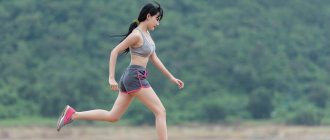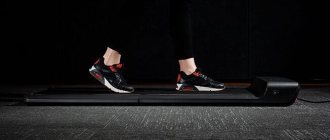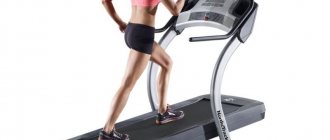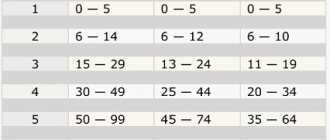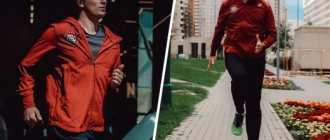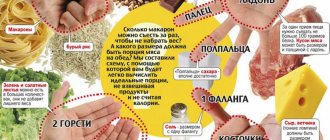Let's face it: the world is not a healthy place at all. We lead a sedentary lifestyle, moving only from the car seat to the office chair and back, and maybe only taking long walks once or twice a month.
Running has long been an advertised panacea for all diseases associated with sedentary work. And if running on the street or in the park has obvious advantages - active movement, fresh air, communication with similar runners - then training on a treadmill causes constant controversy.
The benefits and harms of exercising on a treadmill will, in fact, be purely individual. Running, no matter how well advertised, is not for everyone. It has contraindications related to health status, age, and weight. It is very important to move correctly on a treadmill: place your feet straight, take care of your knees and lower back, and follow safety precautions.
The treadmill can do you both good and bad. But with a competent approach to training, the benefits will be much greater. Our body is designed to walk and run a lot. After the first 30 minutes, a week, a month of active movements, our body changes.
The best time to start classes is right now!
Your muscles work less intensely
Each step on the ground requires more effort from the body than walking on a treadmill. “When you walk on a machine, your muscles don’t engage as actively, because the track itself floats under your feet,” says famous fitness trainer Joey Thurman . “To make your leg muscles work, you need to focus on them.” Whereas when walking on the street, you have to push off, move your hip forward, and not just rearrange your limbs.
“Walking on a treadmill requires less muscle activation and because there is no wind resistance,” says David Rosales, fitness instructor and founder of Roman Fitness Systems. — On a sports machine you can only move forward, and not in different directions, like on the street. It also makes the workout less intense." To make walking on the treadmill as beneficial as possible for your muscles and cardiovascular system, use the incline function. This will bring the movement on the simulator closer to movement on the ground.
pros
Movement identity
The sensations from running on a treadmill and in natural conditions are similar, the running motor skills and the work of the main muscles are the same (it doesn’t matter whether we are moving on the surface or the surface is moving under us), the treadmill trains technique well: running is carried out at a constant pace, so as not to stomp on path, steps have to be made softer and smoother.
Cushioning and running belt
The track absorbs well and helps reduce stress on the knees, ligaments and spine. Manufacturers claim that, according to their research, some track models can absorb up to 40% of shock loads. And if we also take into account that almost all clients of fitness clubs have certain disorders of posture and spine, the majority do not have acceptable running technique and balanced development of the main muscles, choose the wrong shoes for exercise, and even firmly believe in myths and stereotypes, then for many this is especially important. On a perfectly flat surface there is no risk of injury from tripping over something or accidentally stepping on an uneven surface. The hardest surface is concrete, then asphalt, dirt road, tropical dirt, rough terrain. In terms of rigidity, a treadmill can be compared to rough terrain.
Variety of programs
You can set a variety of training programs or manually adjust your running speed and elevation angle and do not depend on the terrain.
Climate
There is no dependence on the weather and no additional equipment is needed.
Comfort
You can watch TV and even forget that you are running during low-intensity training. You don’t need to carry a bottle of water; it’s easier (especially with mirrors) to maintain the correct technique of movements. If you feel bad or overestimate your capabilities, you can always stop and not continue running or walking home. Additional comfort means additional motivation.
Team
In the fitness center there are always like-minded people, not passersby and dogs, roads and cars.
Competent trainer
He can correct mistakes and provide optimal training.
You gain a good sense of balance
Walking on a treadmill is an excellent coordination exercise. “When you walk and run, you only have one foot on the ground most of the time,” says Joey Thurman. “Regular treadmill training improves your balance.” The lesson can be made even more effective. “To do this, you should alternate between forward and backward walking on the machine,” advises John Fox, personal trainer . “The latter will not only improve your sense of balance, but also your memory.”
Contraindications for treadmill running
Despite their many benefits, treadmills are not for everyone . It is best to talk to a doctor who will answer your questions and help you create the right training program that will only bring benefits.
What are the contraindications to jogging on the track?
- diseases of the leg joints: arthritis, arthrosis, etc.;
- any disorders of the musculoskeletal system, especially osteochondrosis in any manifestations;
- cardiovascular diseases: VSD, high blood pressure, heart disease, etc.;
- any diseases of the respiratory system: asthma, pulmonary failure, bronchial diseases, etc.
In addition, doctors strongly recommend limiting or minimizing exercise during pregnancy and breastfeeding. However, a small load, doctors admit, will even be useful.
So, if you have no contraindications to running, you need to choose the treadmill that suits your needs and will give you the joy of regular physical activity.
You're not getting a full body workout
Any walking - whether in the fresh air or on a treadmill - is good physical activity. However, there are significant differences. “Exercising outdoors gives you unique benefits that you don't get from walking on an exercise machine,” say Joyce Shulman and Eric Cohen, founders of the walking app 99 Walks . “Uneven surfaces, varying inclines and descents, stair steps—such natural obstacles will engage the body’s muscles in different ways.”
If you hold the handrails with your hands while working out on a machine, this not only makes the workout less energy-consuming, but can also worsen your posture. To get the most out of walking on a treadmill, avoid using the handrails.
How to properly exercise on a treadmill?
Unsystematic, aimless activities will not bring any positive effect and may even harm the body. To get the maximum benefit and results from having a treadmill at home, it is important to know how to exercise on it correctly.
- You can't start classes without warming up. Be sure to do a small set of simple exercises to awaken your muscles. Stretching the entire body is also important: careful stretching will help prevent muscle damage.
- You can exercise only if you feel well: if you feel tired or heavy in your back, it is better to replace jogging with yoga for today.
- For proper jogging, you need the right clothes: buy special running shoes with shock-absorbing soles that reduce the load on the foot, wear comfortable breeches or running pants. For women, the use of a supportive bra is recommended.
- It is controversial whether or not to drink water during class. Doctors say that the body should not be dehydrated, but fluid during running puts extra strain on the heart. If you're thirsty, be sure to drink - just take very small, slow sips.
You may feel dizzy
Many people don't like to run on treadmills because they feel dizzy after exercising. “If you use your hands on the machine to maintain balance, your internal balance system is not working,” says Changha Hwang, a physical therapist. “When you step off the canvas, the balance system will suddenly turn on again, and you will feel dizzy or floating in space.” To reduce discomfort, walk more slowly on the treadmill and, again, avoid holding the handrails with your hands.
Electric treadmills for home
In electric models, the belt under the runner’s feet rotates independently , under the influence of electric current, focusing on a given program. She will control the entire training process, making sure that the athlete does not deviate from the intended speed and runs for the required amount of time. A great find for those who need a trainer!
Also, electric tracks can be supplemented with other pleasant technical details: for example, monitoring the runner’s heart rate . Most models have the ability to turn on music, and sometimes there are more serious developments: for example, a safety sensor , which turns off the movement of the canvas when a problem occurs. This will help if the runner falters.
The disadvantages of electric tracks include, first of all, the price. A high-quality model, equipped with many additional gadgets, will cost the buyer a decent amount. Secondly, electric tracks are quite bulky.
If you want to purchase an inexpensive, small and lightweight model, focus on mechanical treadmills.
Your heart gets a good workout
Exercising on a treadmill is great for cardiovascular training. “To make the most of them, use an interval format,” says Holly Laver, personal trainer and creator of Wise Fitness Academy. “You can also add incline to increase the difficulty.” The specialist recommends training in the following mode:
- 5 minutes - warm up at a slow pace;
- 2 minutes - fast walking;
- 1 minute - slow walking.
Repeat the cycle for 20 minutes.
Treadmill workout program
Depending on the results you want, you can use different running programs. Each of them gives a different effect.
- If you don't have much time, but want to lose weight, so-called interval training . It only takes 8-10 minutes, during which two running speeds alternate: light, about 5 km/h, and intense, 7-10 km/h. Every minute or two you need to change your running speed. This method quickly fires up the metabolism and helps the body go into fat-melting mode.
- Endurance training involves a long 30-minute session, the running speed of which is distributed as follows: the first 10 minutes are a warm-up, during which the heart rate should not exceed 100 beats per minute, then 10 minutes of running at maximum speed, after which another 10 minutes jog slowly to restore your heart rate.
- The most effective training program that guarantees rapid fat burning is 40 minutes of continuous running at low speed . Stopping and taking breaks is not recommended, nor is trying to run faster. The main principle of this program is the body’s transition to using up its own fat reserves.
Thus, various training programs will help both improve endurance and speed up the process of losing weight.
You work your leg muscles well
Walking on a treadmill forces certain muscle groups to work. “The work includes the muscles of the feet, buttocks, hamstrings, quadriceps, and if you actively move your arms, the muscles of the upper body,” says John Fox. — For a long, relaxed workout on the treadmill, set the incline to a moderate incline of 2 to 3%. During fast walking, the angle can be increased - this will speed up the metabolism and make the muscles work even more actively.”
Compact treadmill
Not every home can accommodate a treadmill. Massive, bulky models take up a lot of space and sometimes interfere with normal movement around the room. What to do if you want to play sports and at the same time maintain home space?
An excellent solution is to purchase a compact treadmill. It differs from others only in its size . Among mechanical models it is much easier to find compact tracks than among electric ones, because they have fewer additional devices.
Compact treadmills can be purchased from almost every manufacturer: usually these are devices whose running belt is 10-15 centimeters narrower than usual (35 centimeters versus the usual 50). This option is quite suitable for a medium-sized man or a slender girl.
However, you should not skimp on the length of the track: even if it seems that 80-90 centimeters in length may be enough for a full run, this is not so. Running on a short track turns out to be very unnatural and in the future threatens joint problems. The ideal length of the canvas is 110 centimeters.
Folding Treadmill for Home
If you don’t have room in your apartment even for a compact walkway, take a closer look at folding options. This track can be easily hidden under the bed or thrown into the trunk, and if necessary, unfolded and used for its intended purpose.
Unfortunately, such tracks are rarely found on sale, and their price is quite high for the characteristics offered. Folding tracks are also most often mechanical. They also produce electrical devices - however, with a minimum number of additional functions.
The choice of treadmills today is huge - electric and mechanical, folding and compact. You can find models for quick weight loss and for strengthening muscles. The treadmill will become your daily ally in your active life.
Whatever path you choose for yourself, regular training will ensure you feel great, have a great mood and always have a blooming appearance.
How to live with a herniated disc?
How to live with a herniated disc is the main question that arises for patients who are diagnosed for the first time.
The first thing I would like to start with is to try to protect patients from the illusion that there is one golden way or method of how to live with a spinal hernia that allows you to solve the problem and forget about the hernia once and for all. Let's be objective, because a hernia is not a problem that arose here and now at the moment when it began to bother you.
A hernia is, as a rule, a long journey that begins with minor functional disorders, gradually leading to the appearance of structural disorders, which naturally culminate in the formation of a hernia. A hernia is not static; it almost never happens that today you have osteochondrosis, and tomorrow you suddenly have a hernia. When thinking about the causes and mechanisms of hernia development, the figurative expression “hernia is a lifelong journey” suggests itself. Indeed, this is almost always what happens. The causes of a hernia are described in detail here.
Hernia is a disease of modern man, to which he begins his journey in childhood. It is clear that a lot depends on genetics, on how strong the connective tissue is, which will determine the initial strength of the disc. But from the moment of birth, the role of genetics ends and the influence of acquired external and internal factors begins. What was the process of childbirth, how traumatic was it, what will be the persistence of functional biomechanical disorders that arose during childbirth and even in the prenatal period, what is their extent, will they self-correct or some of them will remain and become entrenched, continuing to influence the function, and in subsequently and the structure of the spine, how the child’s life will proceed, will he sit a lot, move little, will he lift weights from childhood, will he play sports and what kind of sport will it be, will it be amateur or professional sports, will there be children’s and In adult life, some injuries or protracted chronic diseases of internal organs may occur. Each unfavorable factor can make its own small contribution to the accumulation of herniation, overloading the discs directly from the outside or creating internal conditions in the form of the formation of asymmetrical vertebral settings that overload the discs.
Most often, a hernia is the result of something going wrong in a person’s life for a long time. Hernias are a disease of many more people than is commonly believed. Mostly people who come to doctors are those whose hernias have already begun to bother them. The rest are asymptomatic because they have not yet reached the severity at which anxiety will begin. Moreover, there is no size of hernia up to which you can live in peace, and after which you need, as they say, to start fussing and running to doctors. Even small hernias can cause serious problems. The best treatment for a hernia lies in its prevention, and if it has already appeared, in preventing its enlargement; if it is already large, in an attempt to reduce it; if neurological disorders have developed, in eliminating them as completely as possible. The common thread running through all these points should be the understanding that a hernia is a disease, the onset and development of which comes from biomechanical overloads. Only their most complete inventory can ensure long-term positive dynamics, help stop the progression of the disease, and reverse it.
When eliminating biomechanical overloads, it is important to divide areas of responsibility.
The doctor’s task is to correct internal biomechanical overloads, that is, to reduce restrictions on the mobility of structures of the musculoskeletal system in blocked areas, to improve the condition of soft tissues (muscles, fascia, ligaments, tendons), that is, to carry out corrections that have accumulated, often over many years of life, biomechanical chains that led to disc overload and the formation of hernias in them.
The patient's area of responsibility is the correction of external biomechanical overloads: eliminating heavy lifting from a forward bending position, correct lifting of loads (not by bending the body, but by squatting), eliminating twisting in the lumbar region, hyperextension in the lumbar and cervical spine, sharp, jerky movements.
But let's return to the main question - how to live with a herniated disc? Having talked about the importance and primacy of the biomechanical factor, we will analyze this issue in chronological order.
What to do if you suspect a disc herniation?
How to determine if you have a herniated disc? Let's imagine a situation where the diagnosis of a hernia has not yet been made, but the condition of the spine is already beginning to cause alarming thoughts. What to do? The answer is clear - perform an MRI of the concerned part of the spine. It is better if it is prescribed by a doctor, because the area of complaints does not always coincide with the area of the necessary examination. In what situations should you exercise caution and undergo an MRI of the spine:
- You experience, although tolerable, regular pain in any part of the spine;
- you have experienced an episode of acute pain that does not extend beyond any part of the spine, but is not relieved by taking non-steroidal anti-inflammatory drugs and muscle relaxants for 5-6 days;
- Are you experiencing regular pain in any of the following areas: arm, shoulder girdle, buttock, leg;
- You are concerned about numbness (tingling, goosebumps, burning, coldness) or weakness in an arm or leg;
- Do you engage in any kind of sport that involves lifting weights, regular exercises to develop flexibility, repetitive sharp, jerking movements, impact, or running loads.
Of course, this list of situations is not exhaustive, but it will allow many people to exercise due vigilance and identify a disc herniation or pre-herniation condition at an earlier stage, select the necessary treatment plan, and review the load.
What to do, how to live with a herniated disc when the diagnosis has already been established?
The first thing you need to understand is that the diagnosis of a herniated disc is not a death sentence. The vast majority of hernias do not require surgical treatment. The mere fact of a hernia is not an indication for surgery. Indications for surgical treatment for hernia do exist, but they are only neurological. They occur when a hernia, due to compression, disrupts the blood supply to those nerve formations whose long-term nutritional disorder is unacceptable due to the high risk of persistent impairment of neurological functions. In this case, a quick neurosurgical operation to remove the hernia is required, since if the dysfunction drags on, it will be very difficult, sometimes impossible, to restore it.
Such indications for surgery are called absolute and include:
- pelvic disorders. If a patient with a herniated disc has acutely developed pelvic disorders (urinary retention or incontinence), then he must be operated on. It is necessary to quickly eliminate compression of the nerve structures (spinal cord, cauda equina, L5 or S1 root in the presence of an additional radiculomedullary artery of Deproges-Gotteron) in order to restore blood supply to the areas responsible for impaired functions.
- development of para- or tetraparesis (weakening of both legs or legs and arms). Weakness in the arms and legs can develop with a cervical hernia, but only in the legs with a cervical, thoracic and lumbar hernia. Indicates compression and disruption of the blood supply to the spinal cord or lower lumbar roots (in the presence of an additional radiculomedullary artery). This concludes the absolute indications for surgical intervention.
In addition to absolute ones, there are also relative indications for surgery, these are indications for which surgical treatment is resorted to only if there is no effect from conservative therapy. In this case, it is important to understand the time frame that may be allocated for conservative therapy to assess its effectiveness. It is also important to understand that during these periods it is necessary to carry out not just any treatment, but the correct treatment measures, since incorrect treatment can increase the number of cases requiring surgical intervention.
So, relative indications can be:
- persistence of severe pain for 3-4 months. It is very important that the patient receives the correct treatment during this period. In practice, there are often cases when, over the course of several months, the meaning of treatment is to sequentially replace one drug with another without the use of non-drug therapy. At the same time, it often turns out that if the patient is given the correct treatment, the pain gradually recedes, even if the previous period of pain was several months. Indeed, the danger of long-term pain lies in its chronicity, which on average occurs after 3 months of the presence of regular pain manifestations. The meaning of this condition is the development of central sensitization - a condition in which overexcitation of the pain transmission and perception centers in the central nervous system occurs with the development of their increased sensitivity. This leads to a facilitated and enhanced perception of painful stimuli, and also, sometimes, to the perception of non-painful impulses as painful ones. This usually adds complexity to the treatment of patients, prolongs recovery time, and reduces the results of therapy. Therefore, it is advisable to avoid long periods of pain over many months.
It is important to note that when determining the indications for surgery based on the duration of the pain syndrome, it is necessary to take into account the duration of the severe pain. These are pains that bother a person both in vertical and horizontal positions, lying down are more associated with movements in bed, they make everyday activities impossible, interfere with the satisfaction of basic physiological needs, and concentrate all the person’s attention on painful manifestations. If within 3 months the pain has not completely regressed, but has transformed from severe to moderate or mild, then this cannot be an indication for surgical intervention, but is an indication for repeated courses of conservative therapy, which in most cases allow further reduce the severity of pain to a greater extent.
- the presence of severe muscle paresis caused by damage to one or two, maximum three roots. The roots are more resistant to hypoxia than the spinal cord, so their deep irreversible damage with the development of persistent motor neurological disorders usually develops over at least several weeks. There is no consensus on what period is critical, but most experts believe that it is 4-8 weeks. It is important to understand that during this period there must be pronounced movement disorders, that is, deep paresis, most often developing in the foot (with a lumbar hernia) or hand (with a cervical hernia). It is equally important whether the patient received adequate therapy during this time aimed at eliminating compression of the root and restoring its damaged motor fibers. If not, and the paresis has persisted for several weeks, it makes sense to start a trial therapy and evaluate the response to it. The fact is that with good recovery potential, the first response usually develops within the next 1-2 weeks from the start of proper therapy. If the severity of paresis decreases and it transforms into moderate or mild within 1-2 weeks, it makes sense to continue conservative treatment, even if the paresis has not completely regressed within 4-8 weeks, but has a clear tendency to decrease. If over the next 3-4 weeks the response in terms of reducing muscle weakness is zero, that is, deep paresis persists, subject to proper treatment, then you can consider the possibility of surgery after 3-4 weeks.
So, what to do when the diagnosis of disc herniation is already known and there are no indications for surgery. Contact specialists and engage in conservative treatment. Conservative therapy is the main method of treating patients with hernias. With widespread correct treatment, no more than 1-2% of patients would need surgery. Of course, they are performed much more often, this is due to the fact that the majority of those suffering from hernias are treated mainly only with medication and the decision to perform surgery is most often made according to indications associated with persistent pain syndrome that is not amenable to conservative treatment. However, in fact, the patient does not receive the entire necessary list of treatment, which could lead to the success of conservative therapy. Sometimes the decision to require surgery is made purely on structural grounds, in other words, on the size of the hernia, which is currently unacceptable. It is already known that the larger the hernia and the more advanced its stage, the better it resolves, especially when carrying out physiotherapeutic procedures that can stimulate resorption. Therefore, if the hernia is large, and especially transligamentous (extrusion, sequestration), but does not cause symptoms that are absolute indications for surgery, it should be treated conservatively, since in the vast majority of cases the patient recovers, and the hernia often responds to treatment aimed at stimulating resorption . In small hernias, the response to stimulation of resorption may be poorer, but in these cases surgery is not often recommended, and conservative treatment is usually effective.
How to carry out treatment?
Approaches to conservative therapy are described in detail here. Here we will pay attention to other aspects related to treatment. It can be carried out both in the acute stage and in the remission stage. An exacerbation is a stage when, in addition to biomechanical and structural, there are neurological manifestations of the disease. Remission is a stage in which there are no neurological manifestations at all (complete remission) or they are mild and inconsistent (incomplete remission). Patients are rarely in remission because there are no or minimal complaints. Moreover, if the hernia is asymptomatic and has never manifested itself, the patient, as a rule, has never received treatment for the hernia. It is usually detected by chance, if suddenly a person decides to do an MRI on his own just in case, or when he comes to be examined by a doctor as a preventive measure, any abnormalities are detected during the examination and the doctor recommends performing this study. As a rule, the patient in this case has two types of disorders - structural (the hernia itself) and functional biomechanical.
If the patient has already received treatment for a hernia, it is important what it was: if there was no gentle manual therapy correcting biomechanics and physiotherapy aimed at stimulating resorption, but only drug therapy or non-drug methods were used that did not provide correction of local biomechanical disorders and did not have a resorption effect. potential, then the patient, as a rule, retains the hernia itself, that is, there are structural disorders and biomechanical disorders - asymmetrical installations of various structures of the musculoskeletal system, including the vertebrae of the hernial zone.
Having dealt with this, it becomes clear which therapeutic measures need to be carried out in the acute stage and which in the remission stage.
In remission, the main direction of treatment is the correction of biomechanics through gentle manual therapy, as well as stimulation of resorption through physical therapy if the hernia has the potential for resorption.
In case of exacerbation, in addition to the indicated two areas of therapy, correction of neurological disorders is added; for this, in addition to manual and physical therapy, drug treatment can be used.
The frequency and number of required courses of treatment should be determined individually depending on the nature of the hernia itself and clinical manifestations, as well as on the effectiveness of the treatment. Usually it is necessary to carry out 1-3 courses of treatment. If repeated courses are necessary, the intervals between them are 4-6 months. The need for further preventive treatment and its frequency are determined individually. Most patients with disc herniations, with a treatment approach aimed at the most complete correction of all types of disorders - structural, biomechanical and neurological, recover well within 1-3 courses of treatment and do not require subsequent regular courses of therapy. An important role, of course, is played by maintaining the correct motor regimen and eliminating risk factors for relapse of the disease.
In addition to correct treatment measures, adherence to the correct regimen contributes to a speedy recovery. How to live with a spinal hernia in the acute stage? It is necessary to exclude:
- performing sudden, jerky, uncoordinated movements, lifting weights, bending forward, twisting, hyperextension of the affected part of the spine, visiting the gym. The main rule is not to provoke pain with physical activity; it must be avoided, because acute pain is a sign of traumatization of the nervous structures; its provocation will slow down recovery.
- visiting a bathhouse, sauna, taking a hot bath;
- hypothermia, exposure to drafts;
- acute and chronic stressful situations;
- drinking alcohol.
In the remission phase, the number of restrictions becomes smaller, but there is still a need to comply with some of them:
- You should not lift weights from a forward bending position, do not perform twisting and hyperextension in the lumbar region (for a lumbar hernia), or hyperextension in the cervical region (for a cervical hernia).
- gaming, active sports, running, alpine skiing, snowboarding are not the best types of physical activity for a patient with a hernia; they can cause decompensation of the disease and the development of exacerbation, especially if sudden, sharp, uncoordinated movements are performed.
- It is also better to avoid hypothermia and drafts on an ongoing basis.
Tolerance to thermal procedures (baths, saunas, hot baths) and alcohol usually improves over time, which is associated with the normalization of the functional state of the vessels of the epidural tissue. However, some patients may experience long-term sensitivity to these types of exposures. Most patients should abstain from them for at least two months.
After correction of local biomechanical disorders with gentle manual therapy and physiotherapeutic treatment aimed at stimulating resorption, dynamic observation is necessary to assess the persistence of the positive changes obtained from the treatment and the condition of the hernial protrusion. It is advisable to carry out a repeated examination aimed at assessing the state of the biomechanics and neurological sphere within a period of 2 to 6 months after the end of the course of therapy; it is advisable to perform an MRI to assess the condition of the hernia 4 months after the end of treatment, since the average time for induced resorption if treatment was carried out aimed at its stimulation are 2-6 months. Therefore, a second course of treatment, if necessary, is usually carried out after 4-6 months.
How to live with a spinal hernia after treatment?
After completing the main course of therapy, therapeutic exercises can be prescribed, the purpose of which is to consolidate more correct, more symmetrical positions of the vertebrae and create local myofixation at the level of the hernial segment. In this case, exercises should be aimed at muscles that are weakened and not overloaded by the disease, and should not injure the disc, ligamentous apparatus and nerve roots. They should not cause pain or discomfort. The effectiveness of exercises can only be counted on if they are performed on a regular basis. Long-term complexes, as a rule, are not durable; patients stop performing them as soon as it becomes easier. Complexes lasting 10-15 minutes are still performed by some patients with discipline. Therefore, the complex should include only key exercises that allow for maximum consolidation of the positive changes achieved by basic treatment.
Subsequently, if stable biomechanical and neurological compensation is maintained, the need for repeated courses of treatment is determined by the condition of the hernial protrusion. If the hernia has responded to the stimulation of resorption, has become softer or smaller, it makes sense to carry out repeated courses of treatment aimed at developing the most complete positive changes in the condition of the hernia itself. If the hernia does not respond with positive changes to stimulation of resorption, does not soften or shrink, but the patient is neurologically and biomechanically compensated and can have a full quality of life, elimination of the hernia itself should not be an end in itself. The need for subsequent treatment does not occur in all patients; it is determined by the course of the disease and is carried out according to indications.


